Menu
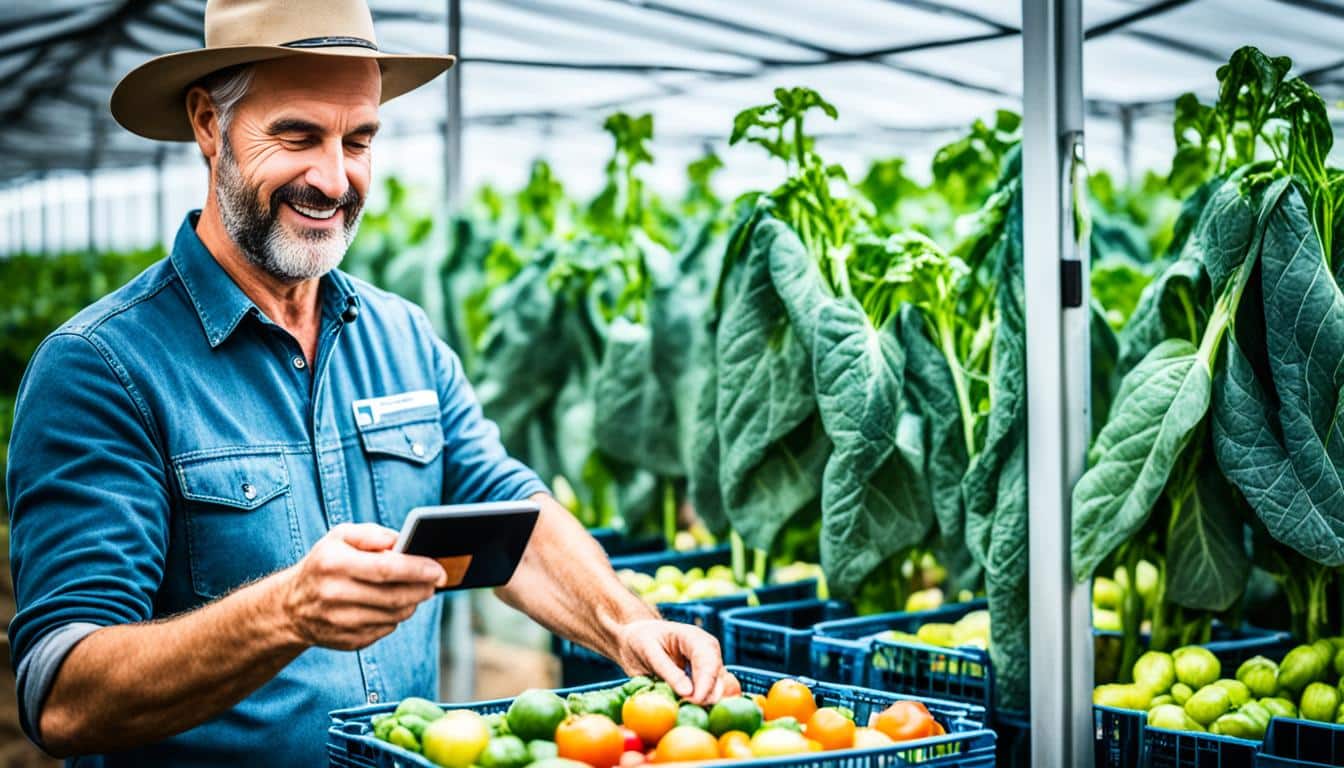
Do you know how British company Provenance tracked tuna from Indonesia to Japan using blockchain? This shows how blockchain is changing agriculture. People want to know where their food comes from. They expect organic and locally sourced food. Blockchain helps with this, providing clear info on food origins.
The farming industry is about to change with blockchain. Companies like Eden Green Technology are leading the way. They use blockchain for better supply chain details. This gives consumers the information they want about the food they buy.
Blockchain in agriculture is an innovative method that creates unchanging digital records. These records go from the farm to the table, ensuring accuracy. It solves key problems in the industry and builds trust by making actions clear to consumers. This new way of working is quickly making farming more open, efficient, and friendly to the planet.
Blockchain is like a digital, secure notepad that keeps tracks of every step and change. It’s at the core of today’s advanced way of recording information. Technologies like this allow us to follow every piece of food from the farm to the market. This means better checks on food safety and more honest information for everyone.
Using blockchain in farming has many pluses. The size of the market using this tech is set to jump from under $300 million in 2022 to nearly $7.4 billion by 2031. This shows how much change and growth blockchain can bring in agriculture.
| Benefits | Impact |
|---|---|
| Traceability and Transparency | Enhances food safety, reducing fraud by 50% and enabling real-time monitoring. |
| Improved Quality Control | Provides reliable data, aiding in smart farming practices and reducing vulnerability by 20%. |
| Efficiency | Facilitates transparent peer-to-peer transactions, reducing costs in the agri-food market by 35%. |
| Fair Payments for Farmers | Ensures adequate compensation for farmers through immutable records and smart contracts. |
| Environmental Sustainability | Encourages sustainable practices, optimal resource use, and helps in carbon emission tracking. |
Blockchain fits well in many areas of farming, from encouraging eco-friendly methods to clearly tracking carbon footprints. Projects like the IBM Food Trust show how it can make the food chain smoother. Yet, getting everyone to use it and agree on how data is managed can be tough. Overcoming these challenges is key to making blockchain work fully in farming.
The use of blockchain in farming is just beginning, but it’s expected to grow a lot. Studies show that in 2022, the market for agriculture supply chain tech was worth 285.34 million USD. This figure is expected to rise to 7378.68 million USD by 2031, with a growth rate of 43.76% each year. These numbers highlight how much blockchain could change farming.
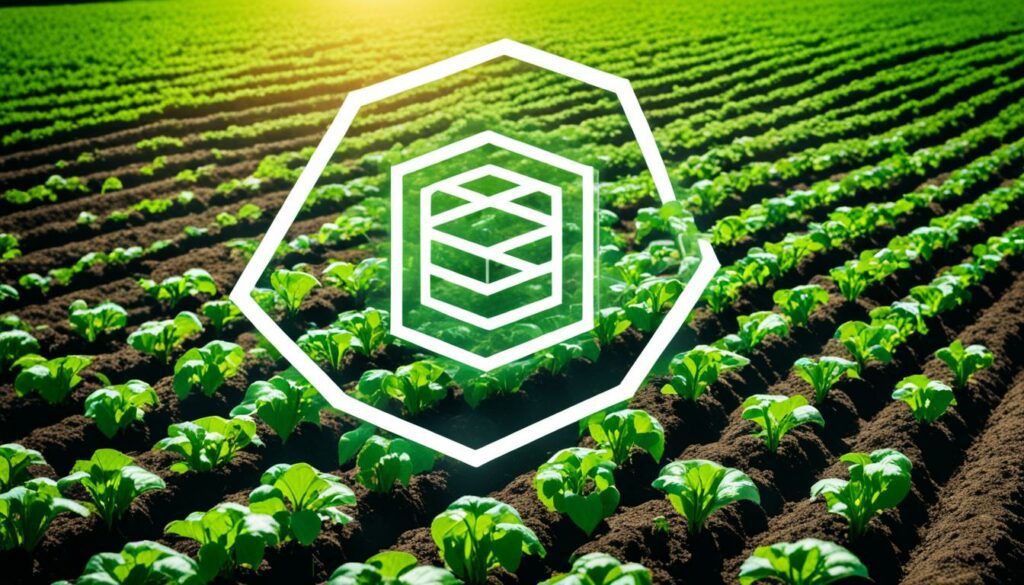
Blockchain technology makes farming more transparent and easy to track. It lets customers know exactly where their food comes from. This increases trust and makes sure farms are run fairly and safely. It also helps with quality control and looking after the environment better.
Digital farming is changing for the better with blockchain. It helps reduce wasting food by tracking products from the start to the store. This leads to quicker fixing of problems and less waste. It helps manage resources more wisely by keeping an eye on things like water and energy use.
| Year | Market Value (Million USD) | Growth Forecast (CAGR) |
|---|---|---|
| 2022 | 285.34 | 43.76% |
| 2031 | 7378.68 | 43.76% |
The agriculture supply chain is changing fast because of blockchain. It improves how resources are used, encourages farming that’s good for the Earth, and makes supply chains more efficient. This helps farmers get better prices, negotiate well, and sell to more places.
But, there are hurdles to using blockchain in farming, like figuring out how to share data, getting everyone to agree, and technical problems. These need easy and affordable ways to fix them, along with clear education to tackle misunderstandings.
Blockchain is proving its worth in many areas, and agriculture is next in line to benefit. Big names like IBM, Microsoft, and SAP SE are leading the charge. They’re making farming more open and better organised thanks to digital technology.
Blockchain has made a big change in farming. It helps track food better and make the journey from the farm to our plate clear. This makes sure food is handled right and helps people trust what they eat.
With blockchain, every step of a product’s trip is recorded. This means we can quickly find and fix problems like bad food. Walmart uses blockchain to check its food, making sure it’s safe.
Using blockchain also cuts out a lot of paperwork and middlemen. It helps farmers sell their goods directly to us, so they get a fair deal. This also makes tracking food easier and cheaper.
Thanks to blockchain, we can now track food as it moves. This means we can check where our food comes from and if it’s safe. Now we can use apps to follow how coffee beans get to us, making sure they’re sourced the right way.
Blockchains are also used in the fishing industry, keeping fish fresh and stopping illegal catches. By sharing so much about our food, blockchain helps us trust what we eat and supports looking after the Earth.
Blockchain tech has boosted quality control in farming, especially in food safety. It introduces a safe digital record from when food is grown to when it reaches your plate.
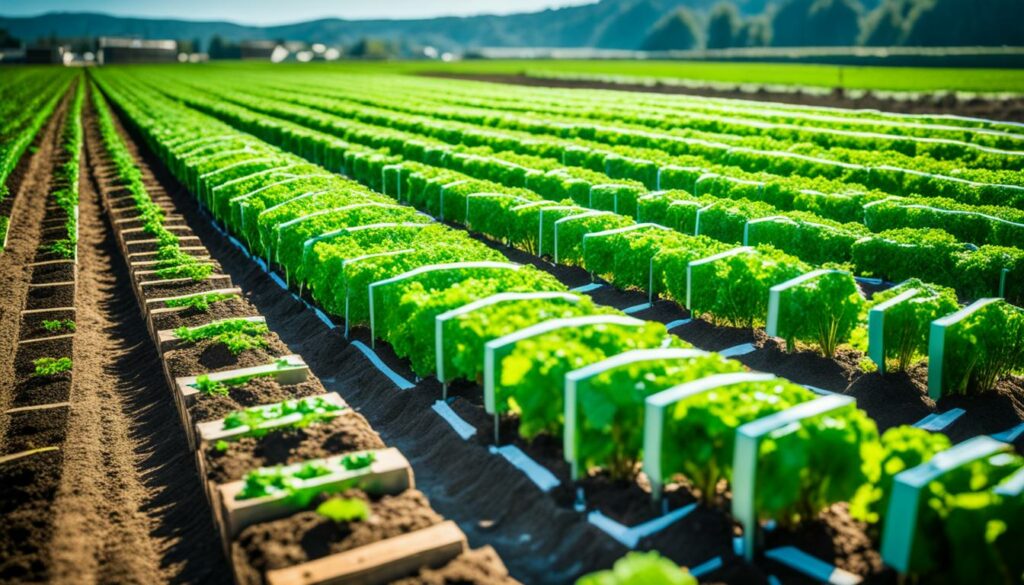
A key feature of blockchain is improving data-driven farming. It keeps records of things like soil health and weather. This helps farmers make better choices, leading to tastier crops and better farming.
Blockchain makes handling food recall efficiency better. The FDA says many food tracking systems can easily lose important records. With blockchain, finding the source of bad food is quicker and cheaper. This is a big step forward in quality control in agriculture, especially in liquid food and dairy.
It also uses a system that lets everyone check the history of food and see if it’s been cleaned. This makes following rules easier and makes food safety a top priority. Everyone involved feels more confident in the food they buy, making blockchain for food safety very important.
Blockchain is changing how we ensure food is safe and high quality in farming.
Blockchain is changing supply chain management for the better. It makes things clear and cuts the long list of middlemen. Studies show that 100% of people see its value, especially in tough times like the COVID-19 pandemic. It’s great for keeping track of shipments, getting data, and stopping frauds.
The use of blockchain in the agricultural supply chain is growing. It’s all about making data open and honest. The market for blockchain in agriculture is set to skyrocket from $285.34 million in 2022 to $7378.68 million by 2031. That’s a huge jump and shows how important blockchain is for making agricultural supply chains better around the world.
There are big problems in the world’s agricultural supply chain and with managing data. 75% of people felt these problems during the pandemic. They see blockchain as a key to solve these issues. With blockchain supply chain solutions, we can cut down on mistakes, reduce costs, and make food safer.
Blockchain provides unparalleled traceability, offering a transparent system for all participants within decentralized supply systems.
Blockchain makes things work smoother by giving everyone involved direct, true info about farm products. Having up-to-date data right there for all to see helps cut steps, make fewer mistakes, and boost how well supply chains run.
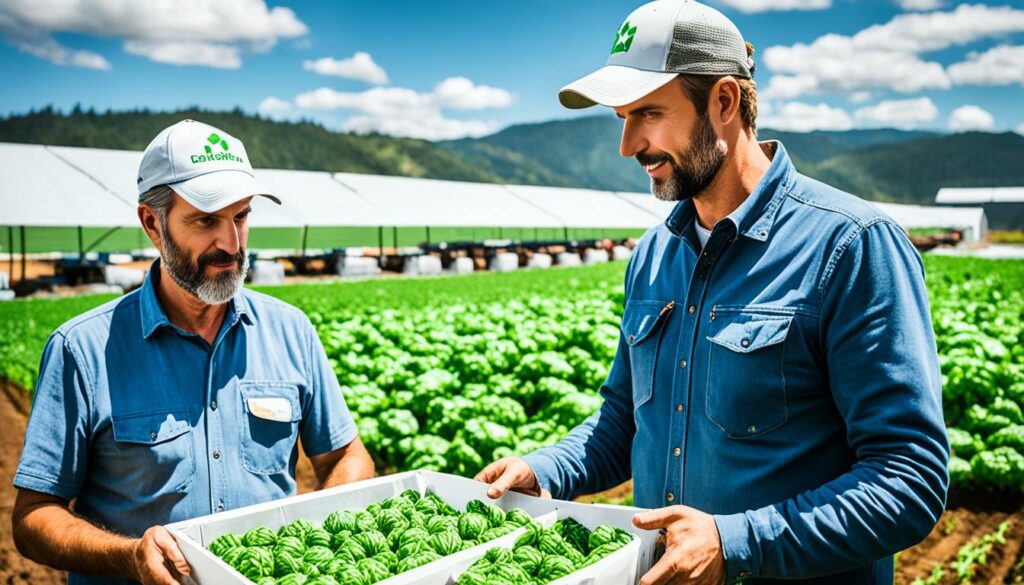
Using blockchain in farming brings many benefits, including smart contracts. These contracts ensure farmers get paid quickly and accurately. This makes the payment process much smoother.
Smart contracts are changing how farmers get paid. They create clear agreements stored on blockchain. This means farmers get their money automatically when they meet certain conditions. It removes the need for middlemen, making sure payments are fair and prompt.
Blockchain makes farming transactions open for all to see. With it, everyone involved can see the details of deals in real time. Farmers get to know what the market needs and how prices are changing. This helps them make better decisions about their income.
Blockchain gives farmers safe entry to world markets. It lets them join global deals with trust, making their market bigger. This tech makes costs lower and use of resources better. It means farmers can earn more.
| Year | Market Size (Million USD) | CAGR (%) |
|---|---|---|
| 2022 | 285.34 | |
| 2031 | 7378.68 | 43.76 |
With blockchain, farming could grow 43.76% every year from 2023 to 2031. This growth shows blockchain is making farming better. It brings more fairness, clearness, and efficiency to the field.
Blockchain is a powerful tool for making farming more eco-friendly. It deals with the big environmental problems of farming. This technology lets us track how we use the environment and resources. It makes people responsible and helps them farm in ways that keep the earth healthy.
Around 80% of the world’s greenhouse gas emissions come from farming. So, it’s very important to use new technology to lower these numbers. Blockchain’s way of keeping records transparent and unchangeable helps cut down on wasted resources. Almost a third to two-fifths of all food made worldwide doesn’t get eaten. This shows we need to make the farming and food systems work better. By using blockchain, we can make the way we get food from farm to table smarter and more efficient.
Most farmers in the world are small, making up about 70% of the total. They often struggle to get the trust and access they need in the market. Blockchain can help create trust between everyone involved in getting food from the farm to you. This is done through smart contracts and making sure no one can change the records. More trust in how we get our food leads to stronger communities and better ways of farming.
The Digital Trust Transformative Market (DTTM) model uses blockchain and new ways of selling to solve these age-old problems. By choosing eco-friendly ways with help from blockchain, we can protect nature better. This means keeping a wide variety of plants and animals around and making our planet a healthier place.
Check out the table below to see how blockchain changes farming for the better:
| Aspect | Blockchain Impact |
|---|---|
| Greenhouse Gas Emissions | Reduction through optimised resource use and waste management |
| Food Waste | Minimised through dynamic supply chains |
| Smallholder Farmers | Enhanced market access and trust through transparent transactions |
| Biodiversity | Preservation through adherence to sustainable practices |
| Social Capital | Development facilitated by trust via blockchain |
| Overall Sustainability | Improved through comprehensive tracking and management of resources |
Blockchain tech is making big waves in farming. It’s changing how we do things in big ways. Here are some real-life examples that show how:
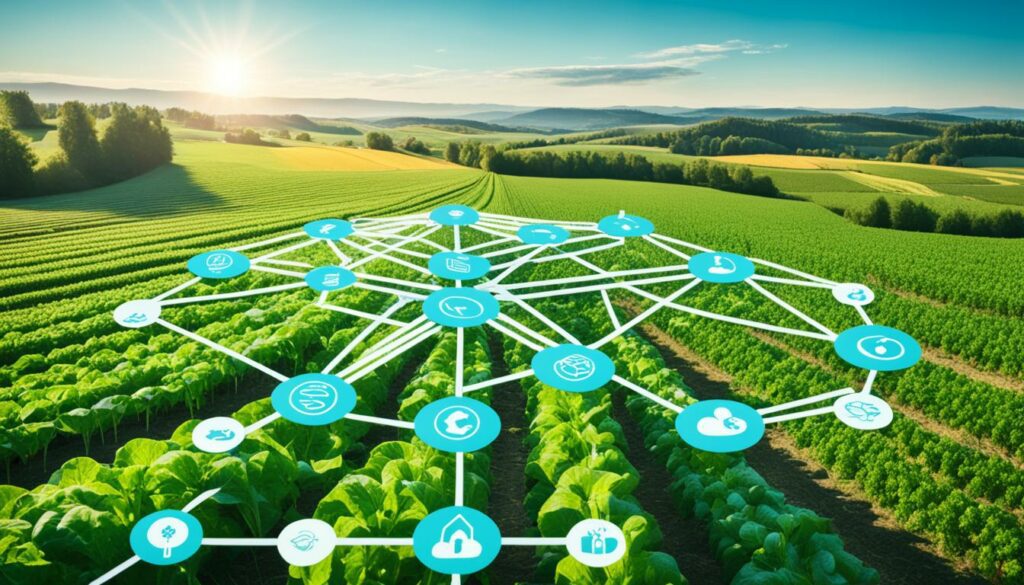
The Marco Polo Network uses blockchain to simplify how we trade between countries. It makes transactions safer and quicker. This helps make trading agricultural goods better overall.
IBM Food Trust stands out in showing us what real-world blockchain case studies can do. It tracks food from its origin to your plate, making everything clearer. With this, it boosts trust, makes our food safer, and cuts down on waste.
Pietro Coricelli tracks their olive oil’s journey with blockchain. This move shows us where it comes from and how it’s made. It builds trust with consumers and highlights their eco-friendly farming. This is a great example of how blockchain helps in agriculture.
Blockchain technology could change farming for the better. But, there are many blockchain implementation challenges. The biggest issue is how the farming industry is not together. Because of this, it’s hard to get everyone to agree on a single way to use blockchain. To make blockchain really work in farming, everyone has to use the same rules on how to share data.
Getting data for the blockchain is not always easy. It costs more for small farms than big ones. This can make it harder for small farms to keep up. And, it can make the gap between rich and poor bigger. This big cost can stop some farmers from using blockchain.
“agricultural technological barrier”
When putting data from different places together, it’s also hard to make sure it’s all right. This can make the data less trustworthy. If the data isn’t correct, it’s hard to depend on it.
Getting blockchain to work with other farm systems also needs a lot of time and effort. And, you need to be skilled in technology. This can be even harder in places with different rules and laws.
Choosing the right platform for blockchain can also be tough. Older blockchain technologies can be slower than other ways of paying. This slowness might make some people not want to use it. During the COVID-19 pandemic, blockchain has been crucial in tracking and managing goods. But, many still found it hard to get data and make changes in how things are moved around the world.
| Challenge | Impact |
|---|---|
| Costly Data Collection | Inhibits smaller farms, increases income gap |
| Fragmented Industry | Hinders standardisation, increases complexity |
| Data Accuracy | Reliability of information compromised |
| Integration into Existing Systems | Requires time, skills, and substantial resources |
| Policy and Regulatory Variations | Different restrictions by country affect implementation |
| Transaction Speed | Slower than traditional networks |
Research in blockchain for farming has grown since 2018. But, not much has changed in practice. This shows we need to do more. Looking at places like Pakistan, where blockchain helps make cities smarter, might give us new ideas. Making friends with countries that are good at using blockchain could help us all learn and do better.
Blockchain is getting more popular in farming. But, there are hurdles to its big use. It’s vital to make tech that is easy for everyone in farming to use. This will help the industry get all the benefits of blockchain.
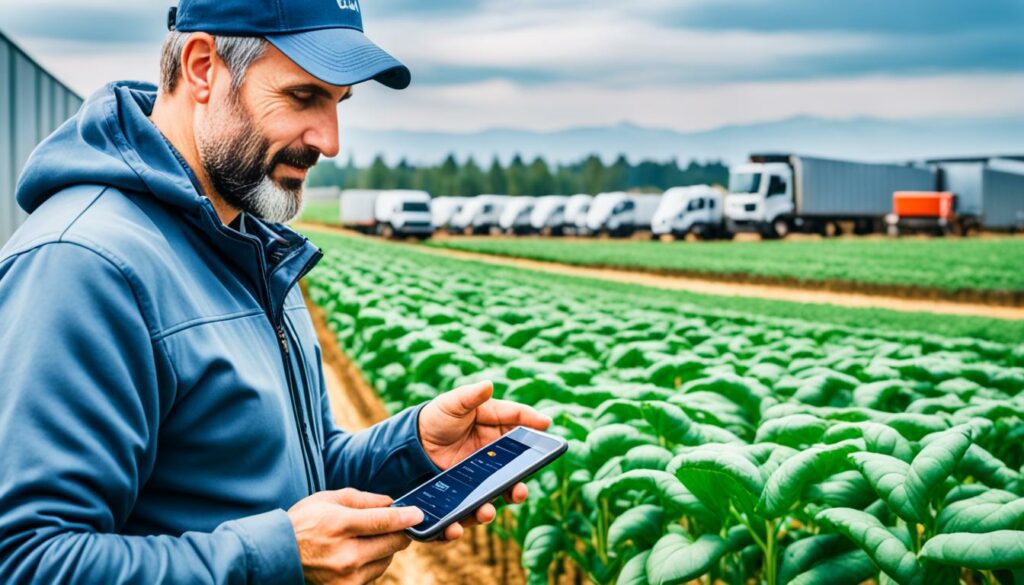
We need simple tech for farmers to use. The market for Blockchain in Agriculture was worth 285.34 million in 2022. It’s expected to reach 7378.68 million by 2031. To reach this potential, we must focus on tech that fits into current systems without trouble.
Smart contracts are a good example. They can help with payments without needing middlemen. This simplifies how farms work and cuts costs. It’s a step towards fixing the problems farmers face with blockchain.
Teaching people about blockchain is key to beating doubts. Training programs can show the benefits of blockchain. They make it clear how it tracks things better, cuts waste, and makes selling abroad easier and safer.
Everyone working together matters a lot. The Global Food Safety Initiative helps set rules everyone follows. Talking with people who make laws makes adopting tech easier.
| Barrier | Solution | Impact |
|---|---|---|
| Technical Complexity | User-friendly interfaces and intuitive software | Simplified adoption and increased usage |
| Data Integrity | Rigorous validation processes | Enhanced trust and information accuracy |
| Legal Complexities | Engagement with policymakers | Compliance with existing laws and reduced legal hurdles |
| Organisational Resistance | Educational programmes and awareness campaigns | Increased adoption and improved efficiency |
Helping farmers use tech and teaching them well is crucial. This will make the farming world better with blockchain. It will be clear, smooth, and more profitable.
Blockchain tech joined with IoT is changing the way we farm. It boosts how much we produce and helps us be more green. This mix lets farmers control their work better, make quick choices, and boost how well everything works.
Putting IoT in farming helps a lot. It lets farmers collect data on the spot and keep an eye from afar. Tools like GPS and sensory tech give up-to-date info on the soil. This helps manage crops better. IoT also makes getting info cheaper and helps farmers sell their goods using mobiles because of IoT integration in agriculture.
Using resources wisely is key in smart farming. Blockchain gives a clear, secure system for handling data. It cuts out middle people with secure tech, which saves money and builds trust. This means farmers use resources better, waste less, and help nature more.
Looking ahead to farm outcomes, blockchain and IoT offer big insights. They use lots of data for smart decisions. This boosts farming’s output. Plus, blockchain helps quickly spot scams or problems with data, keeping everything fair and right.
The link between blockchain and IoT is changing farming a lot. It saves resources, predicts outcomes, and handles challenges well. The coming days of farming are for data, thanks to blockchain and IoT. They’re making farming way better.
| Statistics | Impact |
|---|---|
| Increased ICT efficiency | Better data collection and analysis |
| GPS usage | Enhanced field mapping and machinery guidance |
| Blockchain for transactions | Reduced transaction costs and quick fraud detection |
| Index-based insurances | Simplified payouts and reduced moral hazard |
Blockchain technology is key in ensuring food safety. It does this by providing transparency and traceability. Almost 40 percent of our food, like seafood, is traded worldwide. This makes technologies such as blockchain crucial for making decisions that care for people and the planet.
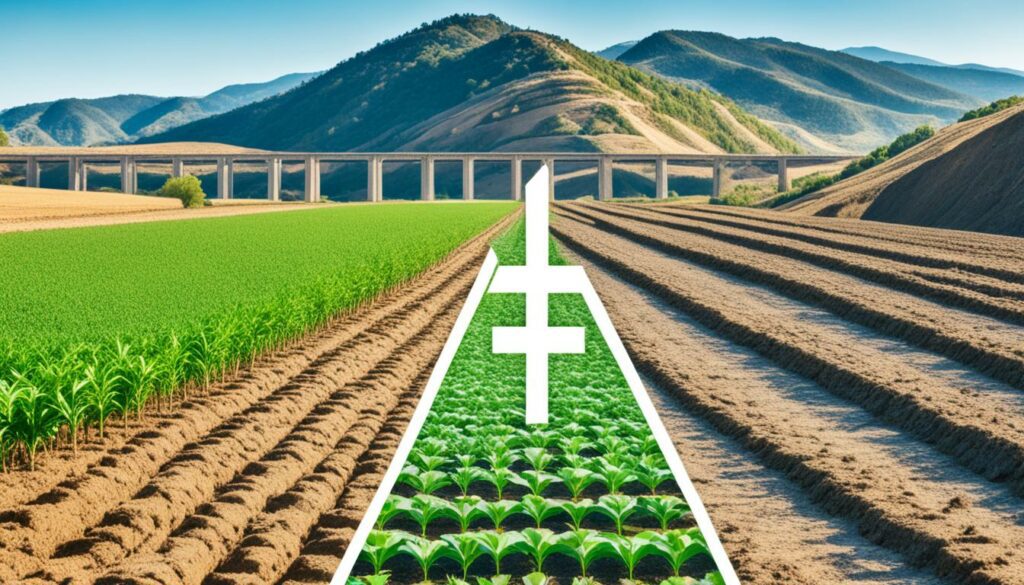
The partnership between IBM and Walmart shows what blockchain can do for food safety. They track food from where it’s grown to where it’s eaten. This effort increases food safety and trust in our food.
| Year | Average Farm Data Points |
|---|---|
| 2014 | 190,000 |
| 2050 (Projected) | 4.1 million |
The amount of data from farms is exploding, from 190,000 to an expected 4.1 million by 2050. This growth shows the big role of data in farming. Blockchain keeps these records secure, helping to make food safer.
Blockchain is also great at fencing off food fraud. It checks the realness of food, making it harder to tamper with. By tracing food right back to its start, blockchain boosts trust for consumers and sellers.
But, helping out small farmers and people in remote areas is tough for blockchain and big data. Not everyone has the skills or technology for these tools. So, a way to include everyone in food safety and blockchain is needed. This could help agriculture grow fairly all around the world.
Blockchain is changing the way we farm. It brings better ways to track and share information about our food. This new tech makes it easier to know where our food comes from and if it’s safe to eat. Not only does it make food safer but also helps us trust what we buy.
The use of blockchain in agriculture is set to grow fast. Research shows its market size will jump from $285.34 million in 2022 to $7,378.68 million by 2031. This means big changes in farming, helping to waste less food and spend less money. For example, thanks to IBM Food Trust, 4 million kilos of olive oil were carefully tracked. This shows how much blockchain can boost transparency and efficiency in food supply chains.
Blockchain is key to cutting out middlemen in farming. By doing this, it helps farmers save money and earn more. Take Renault’s case, for example, they used blockchain to reduce industry costs. But, there are still challenges. Getting everyone to agree on how data should be handled is tricky. Plus, some farmers resist changing the way they manage their products.
Blockchain is already making a big difference in farming. In 2019, companies like Nestlé and Carrefour worked with IBM to trace mashed potato supply chains. This gave shoppers more details than ever before about their food. As farming keeps changing, blockchain will keep encouraging new ways to make food and run farms. It’s showing it’s a game changer in today’s agriculture world.
Blockchain is a digital ledger spread across many computers that records transactions. It secures data from any retroactive changes. This system ensures transparent and unchangeable records, which is key in areas like agriculture.
In agriculture, blockchain is crucial for three main reasons. It allows for tracking products, making food safer, and keeps the supply chain transparent. It solves problems with food safety, sustainability, and ethics by creating a solid record from start to finish.
Even though blockchain in agriculture is just starting, it’s set to grow. From a value of 285.34 million in 2022, it’s estimated to reach 7378.68 million by 2031. This shows how much it could transform the farming industry.
Blockchain makes tracing food from its origin to the table possible. It records each step accurately so that information is always correct. This boosts trust by making the supply chain more open and accountable.
Real-time tracking, thanks to blockchain, allows quick access to product details. This is great for recalling products fast and for building trust with customers. Transparency adds to accountability and makes the food chain work better.
By using data for insights, blockchain makes quality control and food safety better. It looks at things like soil health and temperature to see the big picture of farming. And if there’s a problem, the system can recall products faster.
Blockchain cuts out the middlemen. It lets everyone involved get true and clear data on where food comes from and its state. This boosts the supply chain’s efficiency and control over how food is distributed.
Smart contracts handle deals to make sure farmers are paid on time and every step is clear. They put farmers more in control of prices, lower running costs, and connect them to the global market. This makes trading fairer for everyone.
Blockchain helps with green efforts by tracking how the environment is treated. It makes using resources better through smart contracts. This can cut down waste, use resources smarter, and help save natural variety, all for a greener earth.
There are many uses for blockchain in farming. For example, The Marco Polo Network helps with trading across borders. IBM Food Trust builds a network that includes everyone. And Pietro Coricelli tracks its olive oil journey. These examples show how versatile blockchain is in making the food chain better.
In farming, adopting blockchain has its hurdles. There’s pushback from traditional ways and the industry is not united. Making data follow the same standards is key for it to be widely used. Also, worries about privacy and using too much energy need addressing.
To leap over these tech barriers, we need user-friendly, scalable, and affordable blockchain solutions. Teaching people about its advantages is also crucial. This corrects false ideas and gets more people in agriculture to use blockchain.
When blockchain meets IoT in farming, it opens up new ways to save resources and make smart predictions. These new methods help predict crop yields better and aid in farming that’s good for the planet.
Blockchain’s system makes food safer by being open and true. It tags products all through the chain, cutting down on food cheats and errors. So, it helps people trust where their food comes from.